Electric Mobility: a UX journey with Renault Plug Inn
In recent years, the global shift towards electric vehicles has gained momentum, driven by environmental consciousness and fluctuating gas prices. Despite the increasing number of charging stations in France, the demand often surpasses the available supply, leaving drivers stranded without accessible charging options.
Enter Plug Inn, a groundbreaking solution designed to address the ongoing charging station shortage by enabling owners to share their charging devices with drivers for a nominal fee.
Overview
At the beginning of 2022, Renault approached our team to tackle the charging station dilemma. Initial research ignited the project, leading to a series of user interviews to qualify the opportunity. Several primary use cases emerged, with the main focus on drivers seeking charging options during vacations or family visits. The Plug Inn app comprises two distinct views – Driver View (EV owner) and Host View (charging plug owner), each tailored to meet the specific needs of users.
My design process started from scratch in April 2022, and by December 2022, we successfully built the app from the ground up and conducted beta tests, culminating in the official MVP release in March 2023 and winning 4 Lion Cannes awards in June 2023.
Plug Inn was a long journey and involved multiple user experience I had the opportunity to design, test and improve. For this reason, I decided to showcase my work on this 2-year project through one feature that addressed a major user pain point.
But before we delve into that topic, here's the video the team sent to Cannes to give you some context on the app.
Insights for Improvement
With the beta test and subsequent MVP release, we observed positive feedback and a growing user base. In May 2023, the Improvements phase was initiated and one of our focus was the low conversion rate despite 10,000+ users. A user test of the booking process revealed a critical pain point related to the search process..
Upon opening the app, the users landed on a map where they could search for charging points in the area. What we discovered was that users intuitively expected Plug Inn to behave like apps they commonly use with their vehicle and were surprised they could not generated itineraries and find charging options on the way. As a consequence, they struggled to plan their charging effectively, particularly in understanding the time and autonomy required to reach a charging point;
So far our existing assumption had been that users would seek charging options around a pre-defined destination - like a beach or their family home - which proved flawed. Identifying this challenge sparked a deeper exploration into the user journey, leading to the realization that slow charging times was a significant hurdle in that context. Users faced the dilemma of incorporating charging into their travel plans, especially during long trips.
With that in mind, how might we enable electric vehicle users to plan their trip in the Plug Inn app and charge along their route, despite the slow charging that would prove a significant hurdle?
Designing a Seamless Road Planner
This project revolved around empowering users to integrate slow charging seamlessly into their travel plans, especially during extended journeys. As electric vehicle enthusiasts embark on long trips, the traditional approach of generating an itinerary becomes intricate when considering the prolonged duration of slow charging sessions. My mission was to design a robust road planner for Plug Inn, that not only assists users in mapping out their journey, but also factors in the unique constraints posed by slow charging.
As the UX Designer for this project, I was responsible with creating a comprehensive protocol and prototype. This involved outlining the objectives, forming hypotheses, and defining the entry points to the road planner I would test.
My hypothesis
The primary objectives of the user tests were to assess the practical use case of the road planner and evaluate its impacts on the existing user journey. Before starting on the protocole, I simulated planning a trip with Plug Inn to identify the main issues I wanted to explore and define the scenario I would use for the prototype. The test scenario involved a user who owned an electric vehicle with a 250km autonomy, planning a weekend trip from Paris to Royan to visit family on a week-end. The intentional 500km trip ensured that users would need to make a charging stop.
One critical inquiry focused on determining the maximum break time users would tolerate while waiting for their vehicle to charge, along with the activities they would engage in during this downtime. My hypothesis centered on the idea that users, when examining their itinerary, would prioritize identifying a location for a break, particularly for lunch, rather than actively searching for charging options during their trip when the need to charge arose. The manner in which users approached this task played a pivotal role in shaping the Road Planner user journey and subsequent optimised Search user flow.
A dedicated user flow deviating from the initial search process
I had a key concern regarding the positioning of the entry point within the Search flow, specifically on the map, leading to the road planner. The current user journey to search for a charging point involved locating a destination and navigating on the map or the list to find charging points in the vicinity. Considering a road planner as an alternative user journey, I questioned the optimal point in the journey to introduce this feature.
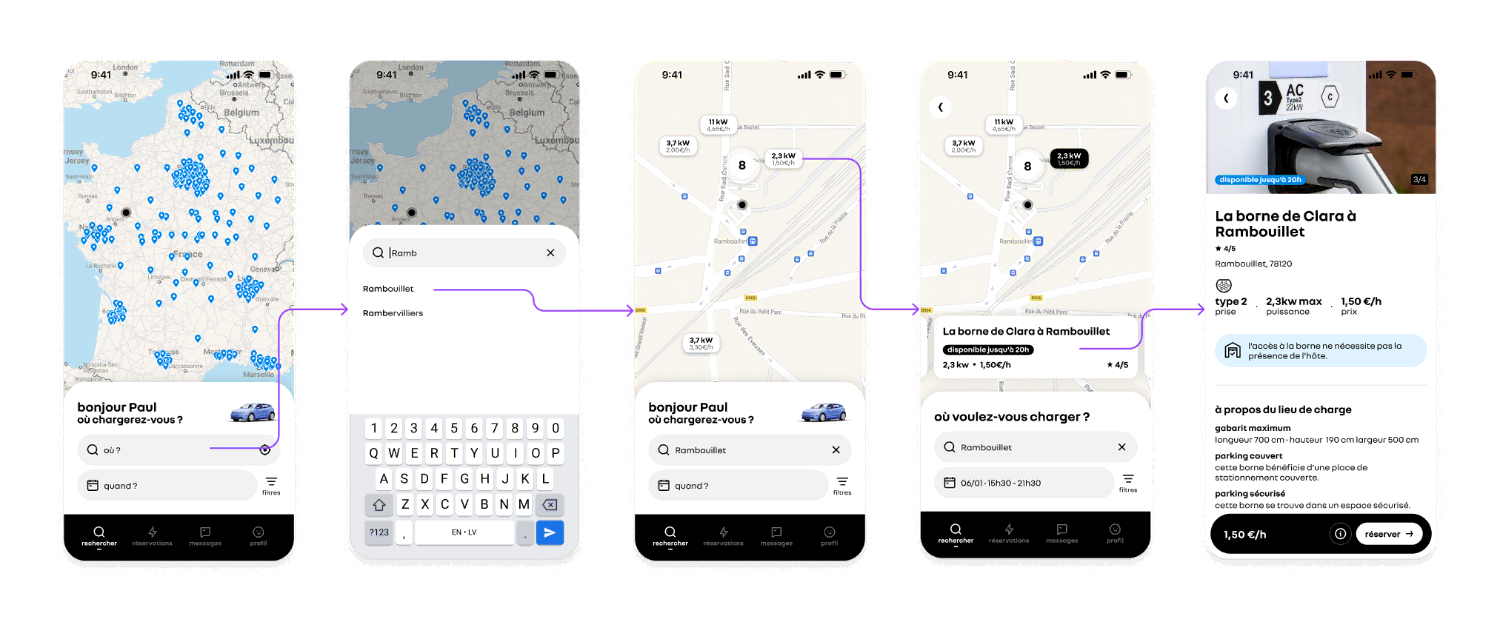
I devised three alternative entry points (prior to the user searching for a location, during the search, and within search results) and developed three solutions to accomplish a task starting from the same screen. The intention was to explore and test which solutions users would naturally find most intuitive and why. To mitigate potential Prototype biases during user testing, the scenario was structured to debute before users were exposed to the prototype.
The initial low-fidelity draft underwent refinement through team collaboration, UI enhancements, and stakeholder reviews under my guidance.
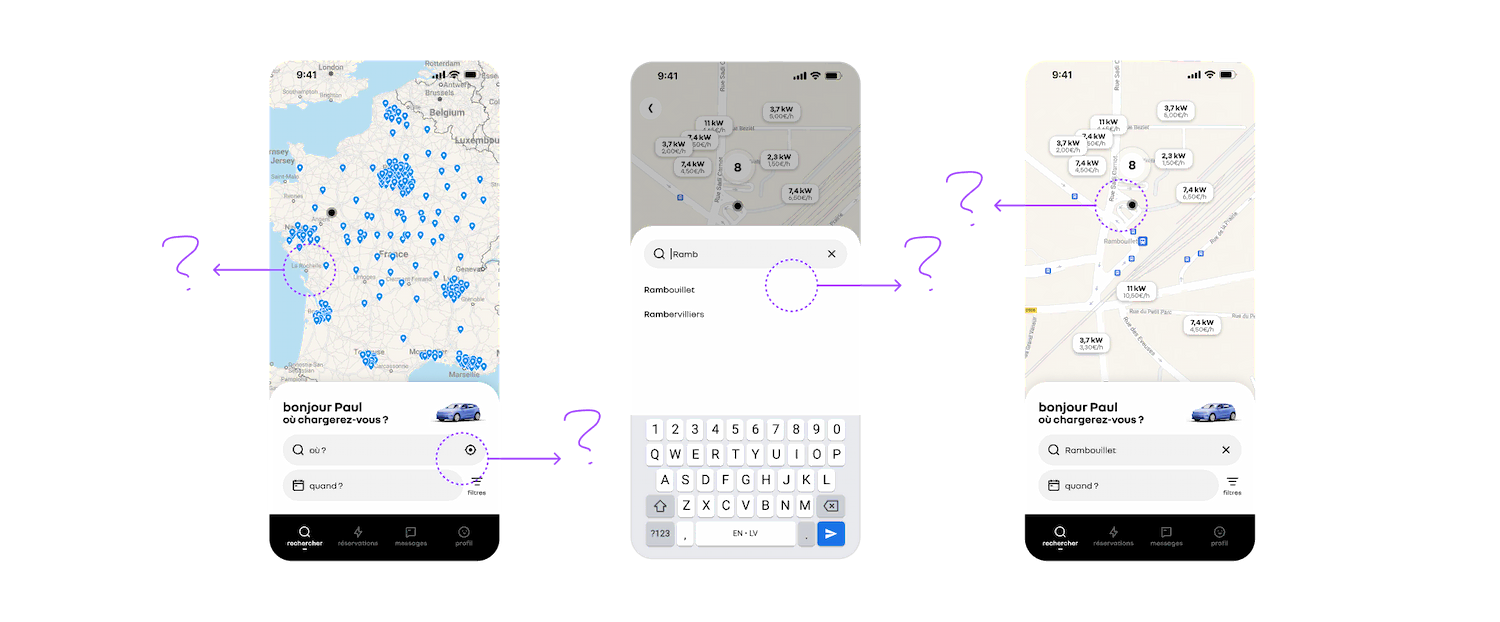
Testing Scenarios: Unveiling Insights for Optimized Design
I personally reached out to users who had previously agreed to be contacted. I successfully recruited a diverse set of participants, enriching the user testing process with varied perspectives.
An important insight I gathered during the testing phase, was that EV drivers still planned their trip as if they were driving a thermic vehicle and had an aversion tolerance to wait time. Users with vehicle equipped with fast charge options were willing to pay more to charge on expensive fast charging and users who owned cheaper entry level vehicle wouldn’t travel with their EV altogether because of the limited autonomy and used their thermic vehicle instead.
Users consistently emphasized the importance of staying close to their intended route and especially not leaving highways, deviating only when compelling reasons arose. The interest in a traditional route generator was limited, signaling a need to pivot towards emphasizing activities along the route to provide genuine value. Usability concerns surfaced, particularly regarding conflicting entry points for user searches.
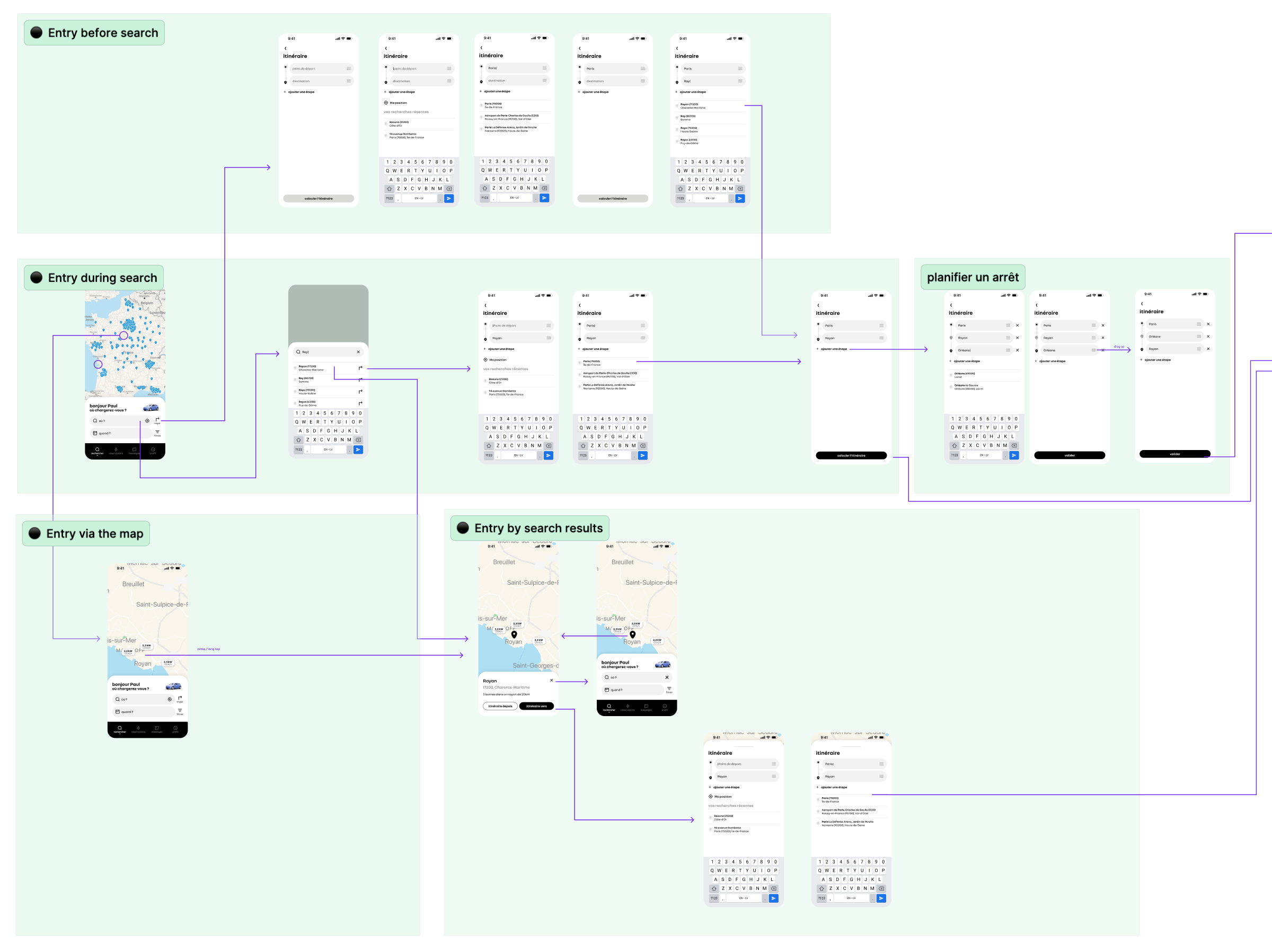
The 'entry from search result' access point to the road planner was also favored, indicating that the app's homepage design effectively encouraged users to search for destinations as if they were on the move, akin to using Waze or the EV brand app.
However, considering the limited use case of the road planner and its intended secondary role in the app's search flow for booking charging points, I advocated against selecting that entry point for the feature, as it would significantly impact the overall user journey. Rather than comparing charging points around a location as in the initial solution, users would have generated an itinerary from the location, leading to a deviation from the booking funnel to another search process.
The solution
In response, I recommended placing an entry point at the root of the experience, thereby addressing the two distinct search processes. This solution also alleviated confusion expressed by some users by explicitly stating Plug Inn use cases. Additionally, I proposed incorporating a preview at the end of the journey, allowing users to confirm the itinerary before proceeding to the booking process.
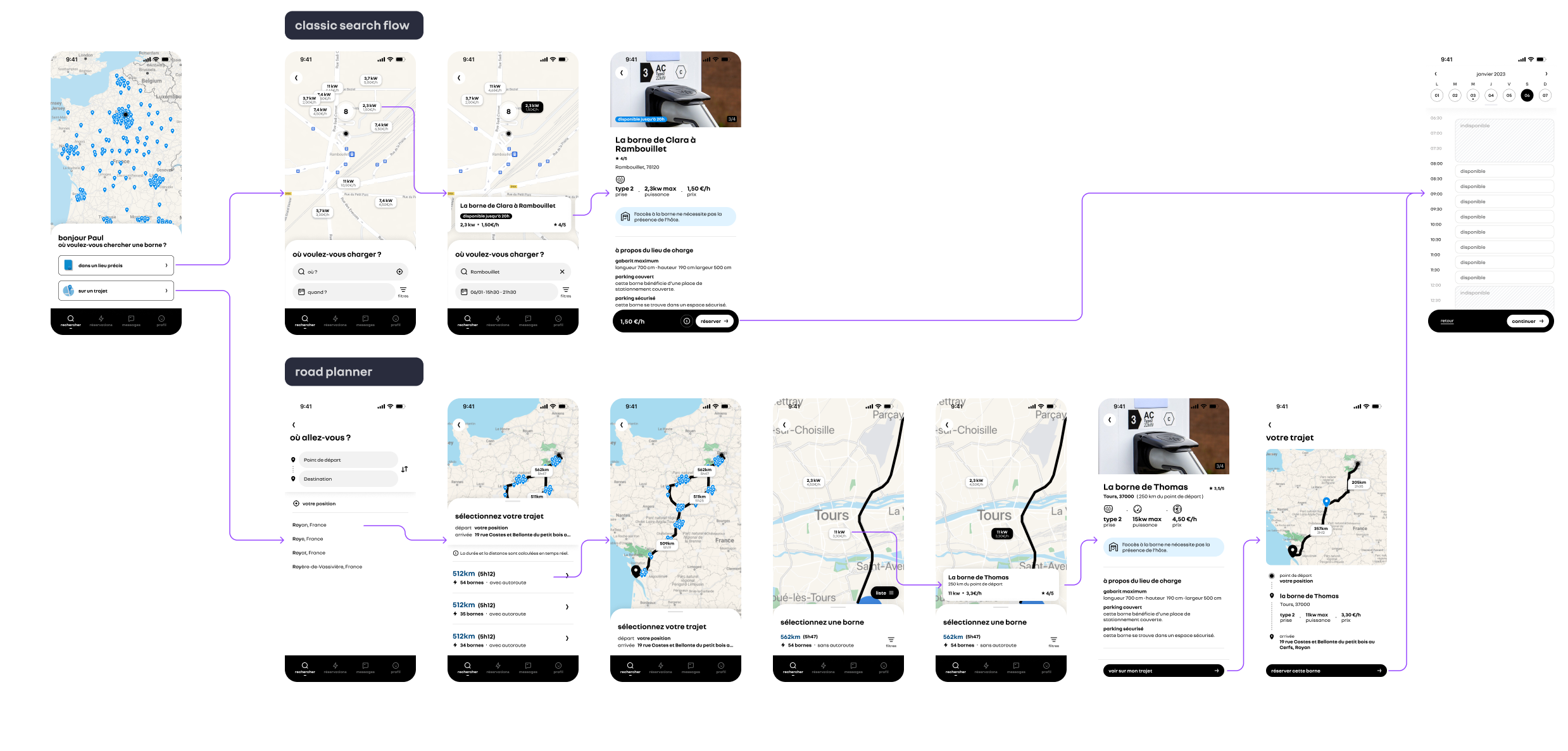
Collaboration with the product team and strategy discussions were also initiated to explore the app's future evolution, with considerations for rural tourism development and the introduction of activities drivers could partake in while their EV was charging.
The Road Planner was released on October 2023, you can test it out for yourself by downloading the app.
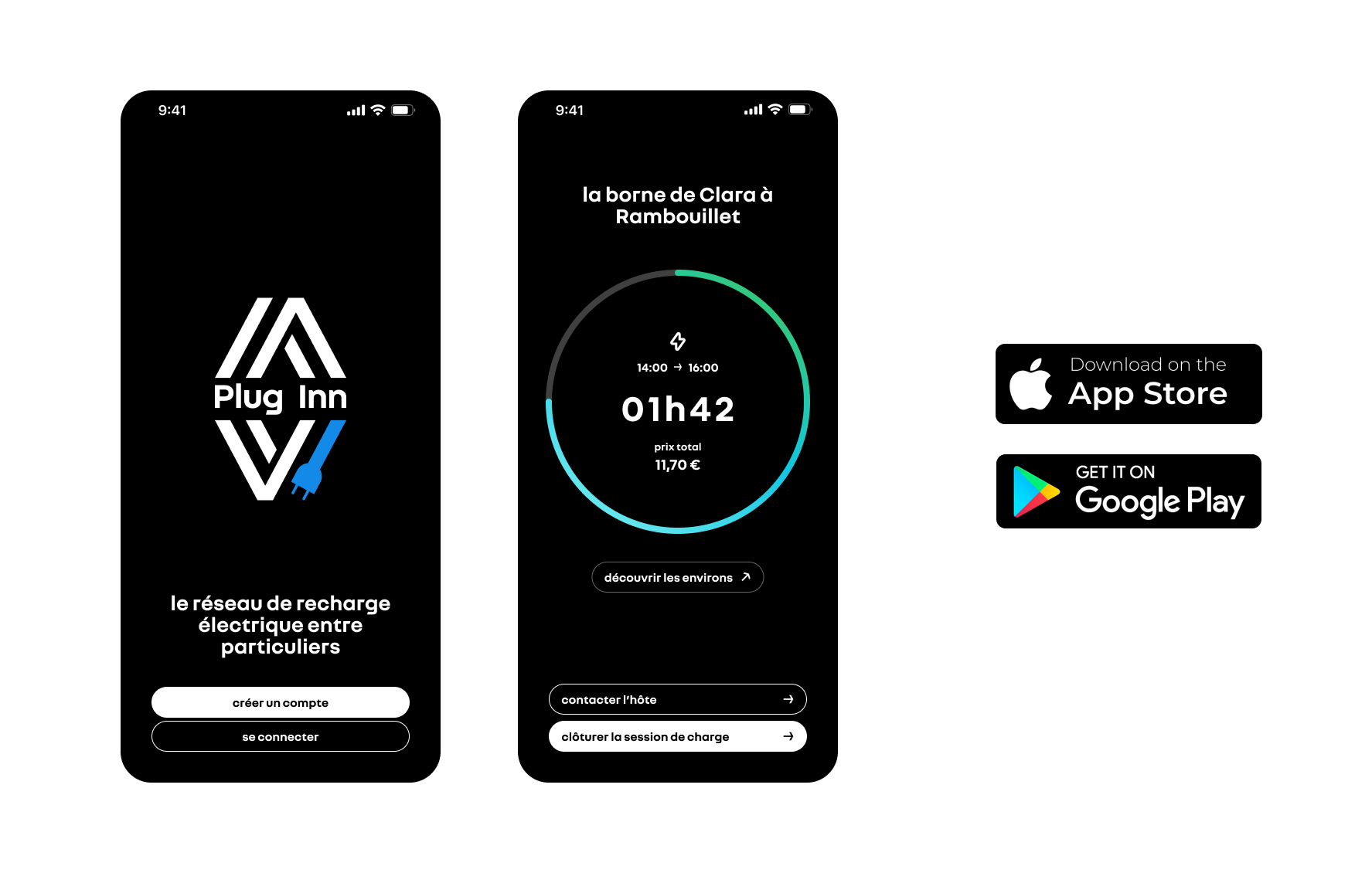
Key takeaways
The user research I did for the Road Planner was one of the arguments to advocate for a pivot the team finally executed in 2024 to shift Plug Inn from a 100% Peer-to-Peer app with mostly residential charging points to integrating more charging points owned by businesses in commercial areas.
The journey of designing Plug Inn was a dynamic exploration: from addressing the charging station shortage to learning about electric infrastructure to refine the user experience of the booking journey.
This two-year project reinforced my belief on the importance of curiosity for designers: continually asking questions, seeking to understand not just user needs but also the underlying hardware and technical constraints. Engaging deeply with both technical and business teams enabled me to bridge gaps between design intent and real-world deployment, ensuring solutions were both innovative and feasible in the market.
